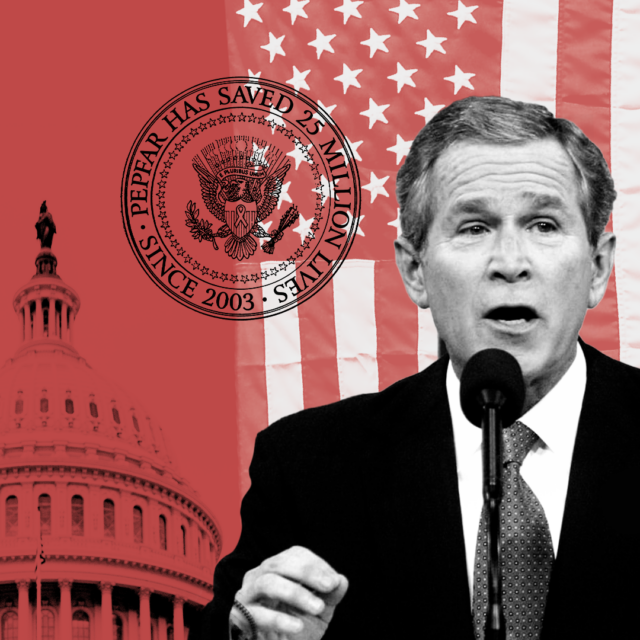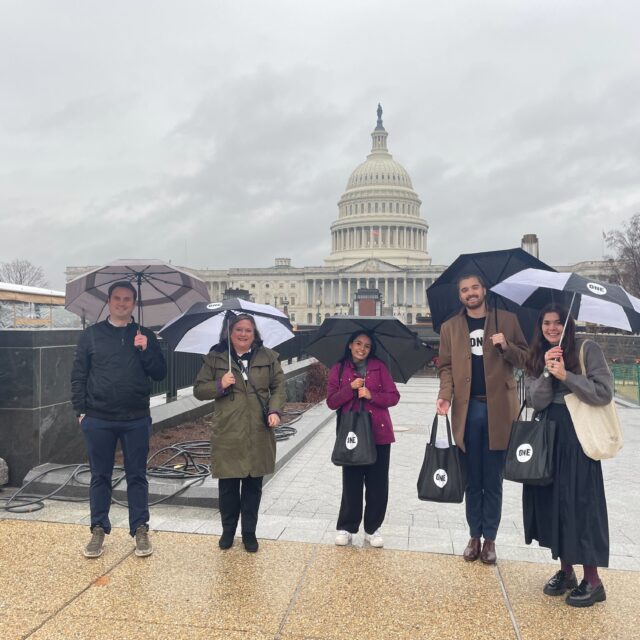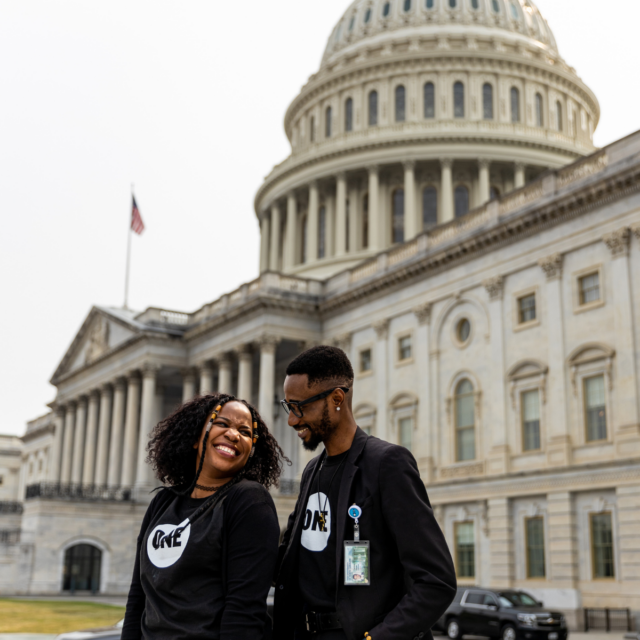On January 28, we mark an important anniversary in the fight to eradicate HIV/AIDS – 20 years since President George W. Bush announced in his State of the Union address a plan for what would soon become PEPFAR – the US President’s Emergency Plan for AIDS Relief.
Allow us to set the scene: It was January 28, 2003, a chilly winter evening in Washington, DC. Nearly 22 years after the first cases of the disease that would eventually be known as AIDS were found in the United States, and 8 years after the discovery of antiretroviral drugs (ARVs), a massive development in AIDS treatment. By 2003, annual HIV/AIDS deaths in the US had plummeted and, in wealthy countries, a diagnosis was no longer an automatic death sentence.
But, as President Bush noted in his address that night, nearly 30 million Africans – many of them children – were infected with HIV and yet only 50,000 people on the continent were being treated with those life-saving drugs.
What he said next would forever alter the trajectory of the global fight to end HIV/AIDS.
President Bush’s request for a $15 billion HIV/AIDS initiative was expected to prevent 7 million new HIV infections, and treat 2 million people. In 2023, twenty years later, PEPFAR has helped save 25 million lives and provide 20 million people with treatment through ARVs.
The story of PEPFAR is a story of medical miracles and mercy, of activism and advocacy. Without a group of strange allies – doctors, bipartisan lawmakers, activists, faith leaders, and celebrities – we might not be telling this story today.
The Hard Part
Convincing a US president to commit to any AIDS initiative in the first place, let alone a historic one, had not proved an easy task. Just ask ONE’s co-founders.
In the early 2000s, Bono and Bobby Shriver had been working with their organization DATA (you now know it as ONE!) to push world leaders to support debt cancellation and free up much needed funds for low-income countries. But, it quickly became clear that the bulk of any newly available funding in African countries would need to go toward combating the HIV/AIDS crisis, for which testing and treatment remained largely unavailable. There was a clear need for resources – and even a handful of members of Congress, including the Congressional Black Caucus, who had already fought for legislative attention on HIV/AIDS globally. But, widespread stigma and confusion surrounding the epidemic made any large-scale, expensive initiative – the kind needed to make measurable change – a tough sell.
In his memoir, Surrender, Bono details the long and often arduous process of pushing President Bush and his advisors to take big, bold action – from meetings in the White House with then National Security Advisor Dr. Condoleezza Rice, to showing up at Dr. Anthony Fauci’s home to talk ARVs, to the “Heart of America” tour which brought the urgency and heartbreak of the AIDS crisis in Africa to American voters. Two years of intense and unrelenting effort that – for all its meetings with famous players in storied halls of power – ended in a scene all too familiar for most Americans. On the night of President Bush’s second State of the Union, Bono – like millions of us here in the US – was at home, on the couch, watching CNN:
“I watch as the president asks Congress to commit $15 billion to fight AIDS starting with fourteen of the hardest hit countries. Until COVID-19, it would turn out to be the largest health intervention to fight a single disease in the history of medicine.
“I think of the intensity of my last two years and wonder at the staying power of activists who have been doing this for decades… Driven by the loss of their families, friends, and colleagues. On their shoulders we have stood.”
The Even Harder Part
Okay, so President Bush announced his plan for PEPFAR in front of a joint session of Congress and the American people. Good to go, right?
Not quite.
“This wasn’t something that President Bush or any other president could just do by signing a piece of paper, you actually needed Congress to approve it,” ONE co-founder Bobby Shriver told Sirius XM this week in an interview on the establishment of PEPFAR. “So, the getting of the votes – that underappreciated art in American politics and politics in general – counting the votes you need and somehow persuading them to vote for a thing that, in those days, looked a little crazy was a real accomplishment of the Bush administration and the activism world that we were in, who worked with the Bush administration to get those votes.”
As it turned out, the process of getting the votes produced some… peculiar alliances. Then as now, the severity of the HIV/AIDS crisis outweighed party politics and the logistical challenges of setting up a program of such size. PEPFAR’s widely bipartisan authorization in May of 2003 would not have been possible without shared efforts and support from Congressional and Administration leaders across the political spectrum. The program’s continued reauthorization in the years since is a testament to the lasting power of bipartisan leadership and ideas.
The Last 20 Years – and the Next
In hindsight, PEPFAR is a stunning achievement, a linchpin in a storied American legacy of global leadership. But in January 2003, it was a gamble. The past 20 years of incredible progress have dramatically changed the landscape of the global HIV/AIDS fight, while also contributing key improvements to efforts to tackle other diseases and areas of development.
Our fight to end HIV/AIDS is still far from over. The COVID-19 pandemic disrupted access to HIV treatment and testing for many, threatening to slow or, in some cases, reverse two decades of hard-fought progress. This year, Congress will need to reauthorize PEPFAR so it can continue its lifesaving work and help get the fight to end HIV/AIDS back on track. As they do, a moment from President Bush’s speech twenty years ago to keep in mind:
“Seldom has history offered a greater opportunity to do so much for so many.”

Want to learn more about PEPFAR? Keep an eye on the ONE blog – this story is just the first in our “PEPFAR at 20” series highlighting the program’s life-saving work while we fight for reauthorization in 2023!



